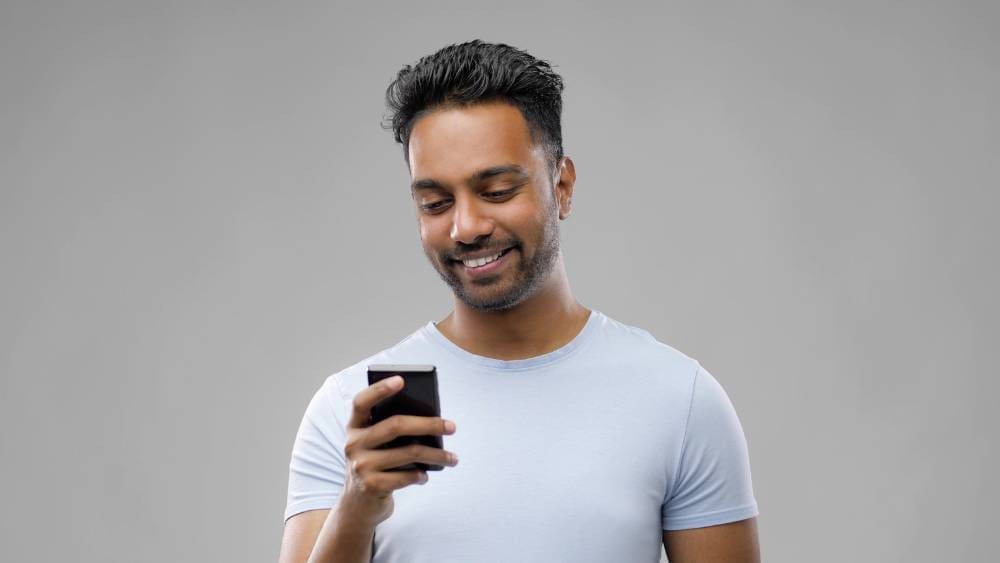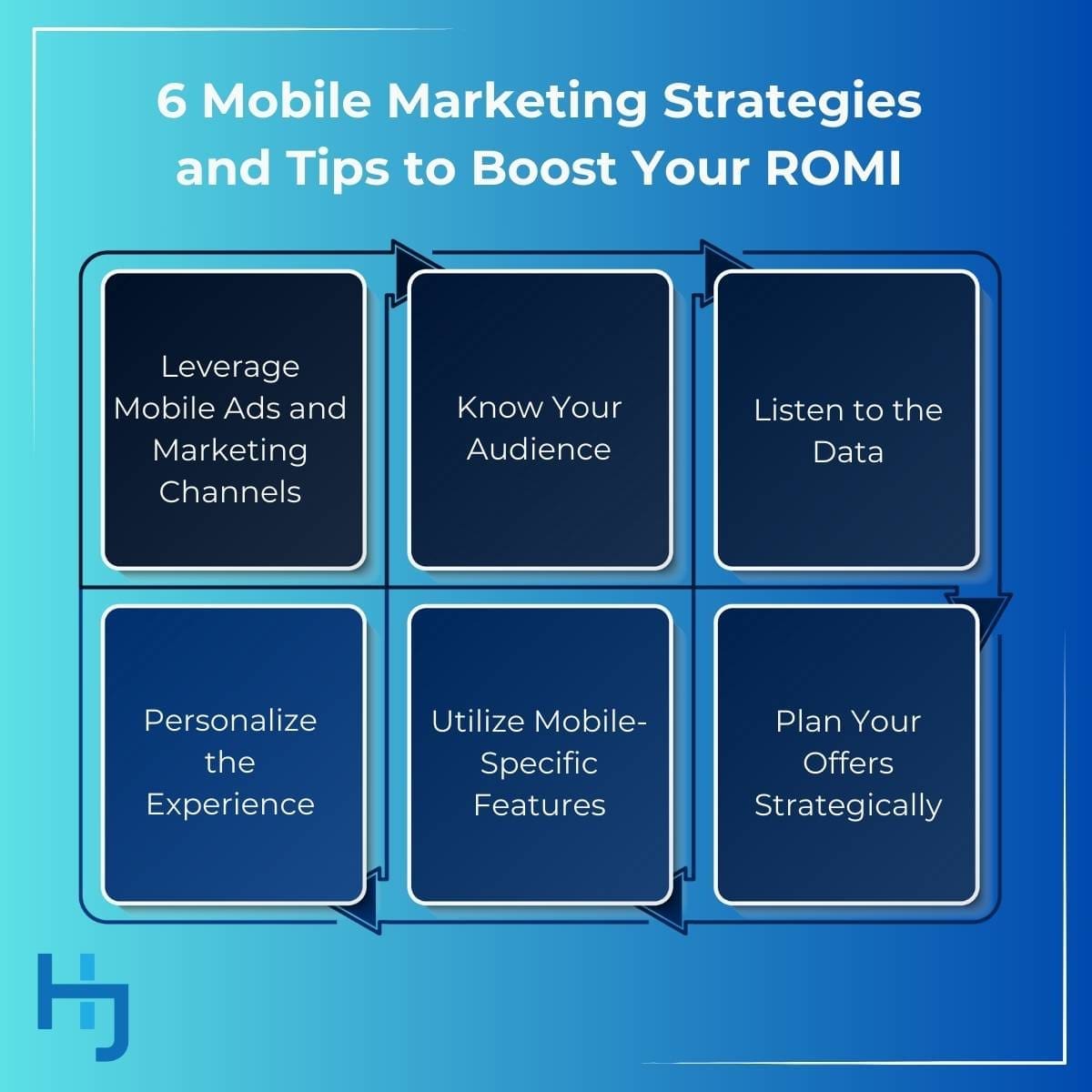 Does your business have a dedicated mobile marketing strategy? Not just a mobile-friendly website—a documented plan to connect with your audience in a way that complements their busy lives, delivers real value, and supports your business and marketing goals? Most businesses don’t, but it’s an important step that will help your business grow as you climb the Digital Marketing Tree.
Does your business have a dedicated mobile marketing strategy? Not just a mobile-friendly website—a documented plan to connect with your audience in a way that complements their busy lives, delivers real value, and supports your business and marketing goals? Most businesses don’t, but it’s an important step that will help your business grow as you climb the Digital Marketing Tree.
What is Mobile Marketing, and Why is it Important?
It’s no secret that the world has grown increasingly mobile. Overall, 97 percent of the adult population have cell phones, and 85 percent have smartphones, per Pew.
We’re using our phones in ways previous generations never imagined, too. For instance, internet search/ web browsing is the number-one use of smartphones, according to Qualcomm surveys. Social media apps, shopping, and navigation/ location-based services also fall within the top ten uses.
These activities consume a lot of time. People now spend an average of 276 minutes daily on non-voice activities on their phones, per Statista. From a business perspective, these are all opportunities to connect with your audience, meet your customers’ needs, and stay top-of-mind.
Plus, there are around 142 billion mobile local search queries yearly, per Statista. More than three-quarters of these result in a brick-and-mortar visit within 24 hours, according to Google.
In other words, mobile marketing is essential whether your company conducts business online, operates a physical location, or both. If you improve results with mobile marketing, your company can grow exponentially.
Important Mobile Marketing Metrics
If your business operates an app or has people log into your website, you can use metrics related to these to gauge your success. If not, you’ll use traditional digital marketing metrics filtered for mobile traffic.
For instance, you can gauge success by tracking mobile visitors to your website and their time on web pages. Or, you can track the results of specific campaigns and initiatives, such as visits from mobile-oriented SEO keywords and mobile PPC web traffic and phone calls.
Because tracking people who move from mobile to brick-and-mortar can sometimes be difficult, many brands leverage many methods. For instance, businesses that offer reservations or appointments offer online booking options, so conversions are tracked virtually rather than in the physical location. Others include special discount codes on their landing pages or ask people to provide an email address or phone number to text to receive a special offer on their first visit.
With these early-stage tracking methods in place, it’s much easier to calculate key metrics like conversion rates, sales revenue from mobile marketing, return on marketing investment (ROMI), and cost per lead.
6 Mobile Marketing Strategies and Tips to Boost Your ROMI
As you begin planning, keep the following mobile marketing strategies and tips in mind.
1. Leverage Mobile Ads and Marketing Channels
There’s always some crossover between traditional digital marketing and mobile marketing. For instance, PPC ads, SEO, and social media marketing apply to both types, though your approach and targeting will differ for mobile users. In addition to this, there are mobile-specific channels you can leverage, too. These include options like in-app ads, push notifications, and text message/ SMS marketing.
As you master these methods, you may wish to experiment with newer concepts like proximity marketing. Beacon marketing, for example, lets you keep a pulse on your customers and send them targeted messages when they’re close to one of your beacons. The technology relies on Bluetooth and sends out a signal. When that signal is picked up by a customer’s phone, or more often, your app on their phone, it can trigger specific offers. This approach is often used in retail. For instance, if you pause outside a store or at a specific display and then walk away, you might instantly receive a push notification or a text message with a special offer that encourages you to purchase.
Beacon marketing is also being tested with social media. In these cases, a social media app picks up on the beacon and then delivers a message to your phone. This may be more promising for smaller businesses that don’t have dedicated apps or provide rapid services. Imagine participating in a conference and being able to invite people to visit your booth because they’ve passed a beacon that Facebook or X manages. Or, imagine being able to instantly invite people to your office for a free consultation because they’re in the neighborhood or visiting a business that a potential customer might.
2. Know Your Audience
All digital marketing initiatives should be built around your customer personas. A well-defined persona covers details like how the person engages online and what platforms they use. It may cover what device they use to access the Internet and other details about their online behaviors.
For example, let’s say your persona is a 35-year-old named Jack. Whereas 51 percent of the general population prefers text over phone calls, according to Bankless Times, 75 percent of millennials do, per Media Post. That means your persona is a texter, so anytime we create a marketing campaign for him, you’ll include texting options. For instance, you’ll invite him to text you for more information or to receive an exclusive discount. Your persona documentation also indicates that Jack is an avid Facebook user, so your plan will include sharing content that interests him there, as well as some paid advertising.
This approach ensures your resources are focused on areas that yield results and boosts the success of campaigns.
3. Listen to the Data
Collect data as you go to refine your personas and learn what works best for your audience, but keep in mind that this only paints a partial picture. It can tell you that something is working or isn’t working. It doesn’t always tell you why. Because of this, collecting feedback from your audience is also helpful.
4. Personalize the Experience
Even though certain types of mobile marketing, like push notifications and text marketing, almost guarantee your customer will see your message, leveraging them doesn’t mean that your offer will resonate with the recipient or that it will even be welcome. Always tailor your offers and messages to the recipient.
There are many ways to leverage location-based marketing for personalization, too. For instance, your ads and landing pages can be geographically targeted. You can set up your Google Business profile to ensure your brand appears when people near you are also looking for what you offer.
5. Utilize Mobile-Specific Features
Make it easy for your customers to complete their desired action without leaving their phone. For instance, QR codes can guide people to information and signup forms. Consider incorporating mobile payments and real-time tracking whenever possible, too.
Consider creating a mobile content marketing strategy as well. In these cases, you might craft shorter content, add subtitles to videos to ensure they can be understood without sound, and include options to text or call from your website.
It’s also worth noting that search terms often differ when people search via mobile. For instance, rather than typing “printing companies in southern California,” a mobile user is likelier to type “printing company near me.” Those using voice search will also be different, as they’re more likely to have search queries that sound like they’re talking to a human. Those searches might be more like, “Where’s the closest printing company?”
6. Plan Your Offers Strategically
Mobile marketing is fantastic because it puts you directly in front of your customers in a way that nothing else can. However, this also means you’re being entrusted with someone’s time and attention more than other brands. It’s not something to take lightly. You must respect this arrangement and be mindful of delivering real value when leveraging techniques like SMS marketing or push notifications.
Planning your mobile marketing campaigns around special events or trends may be helpful to ensure your message is timely. Consider offering things like coupons or discounts that expire within a short window, as this tends to align better with the medium.

Get Help Boosting Your Mobile Marketing Performance
Whether you’re just starting with mobile marketing, are ready to level up to more advanced techniques, or are struggling to get ROMI from your campaigns, I can help. As a seasoned digital marketing consultant with a background in business, I’ve been at the forefront of technology since day one, helping brands be discovered via search, social, and more. I welcome the opportunity to help your brand gain visibility via mobile. Connect with me for a complimentary consultation.




































































